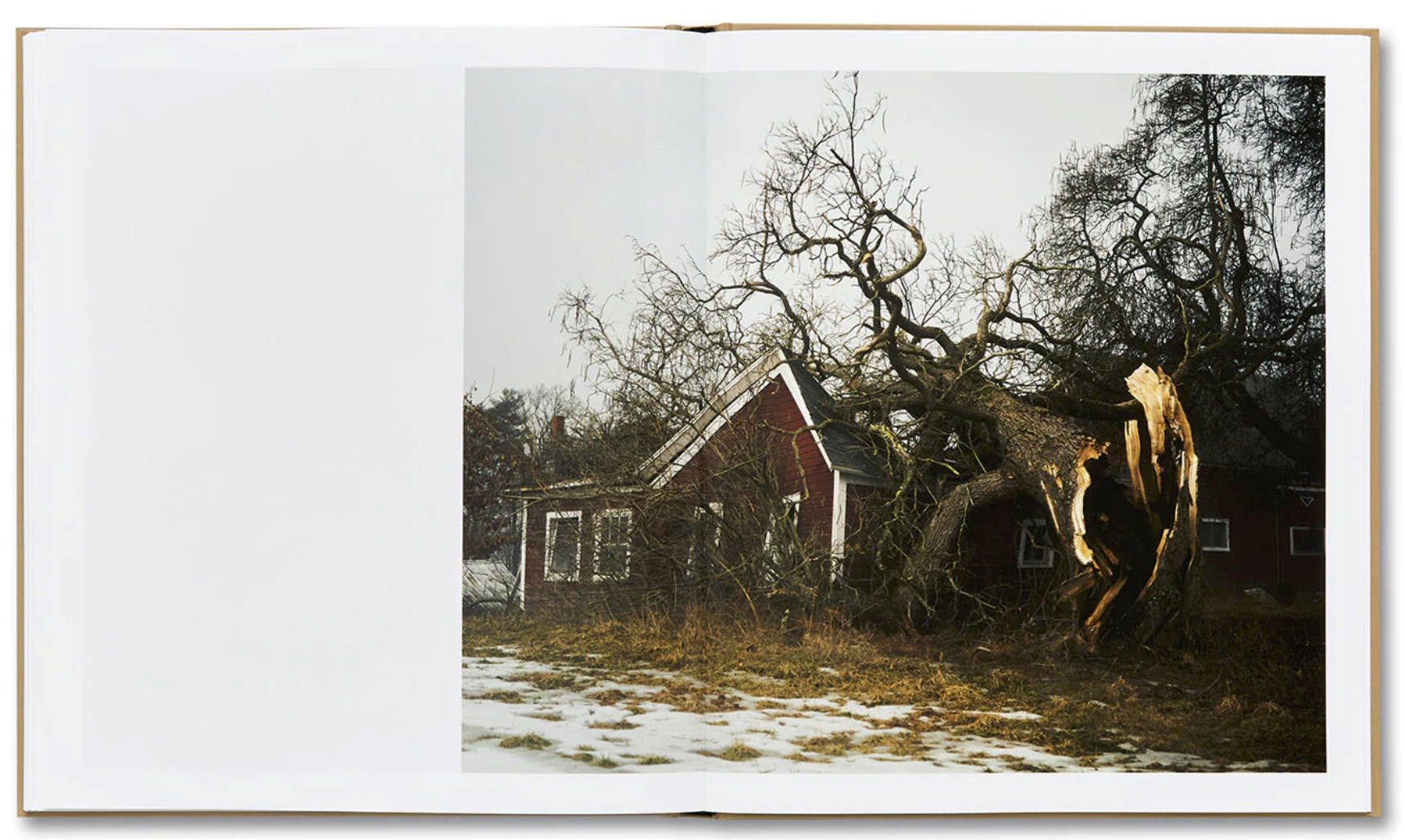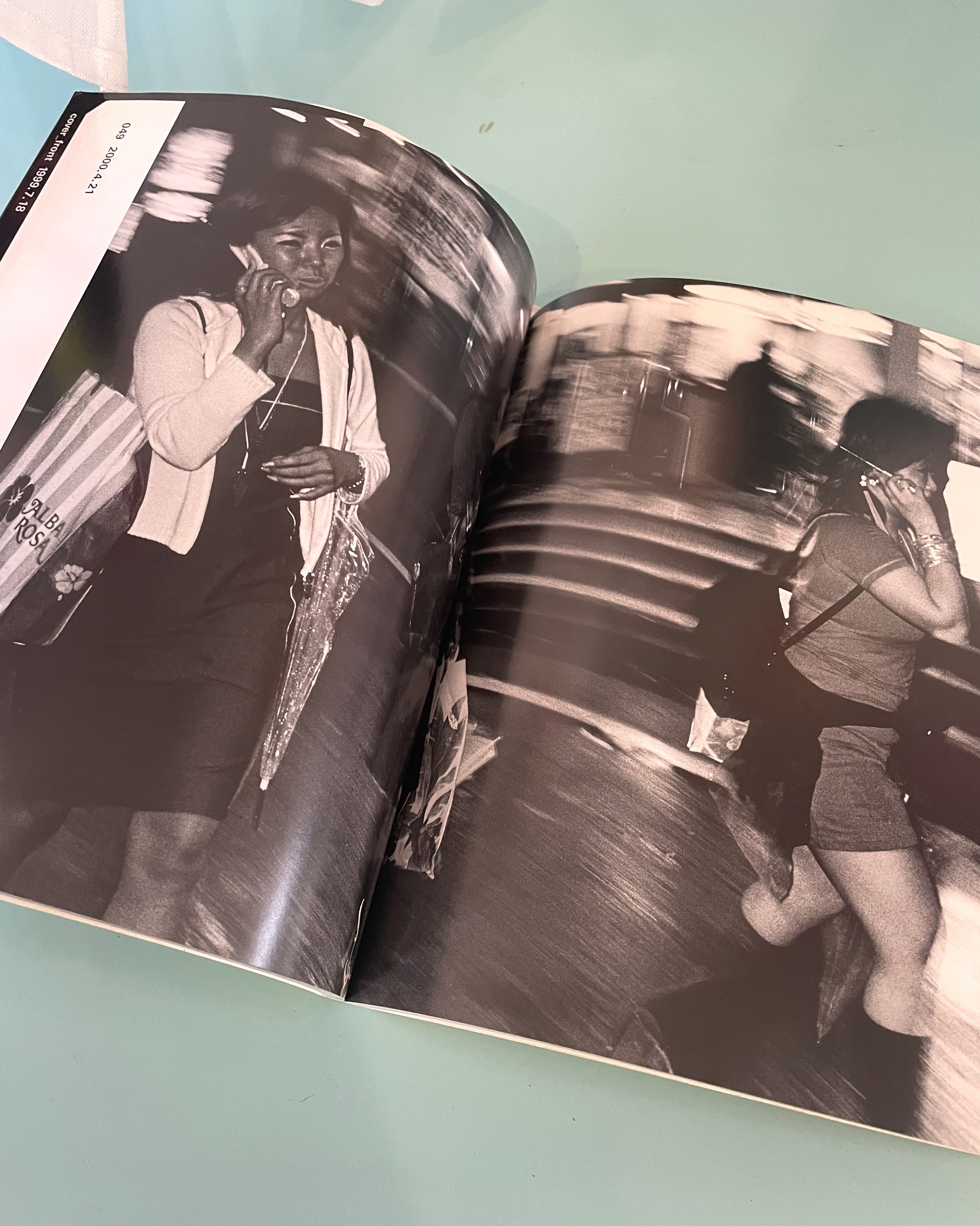The Local, Nick Meyer
Nick Meyer grew up in a small mill town in Western Massachusetts and since his youth the town’s terrain has been in flux, with houses and shops continuously erected, razed, and rebuilt in the chasm left by disintegrated industries. The Local documents a town caught between aspiration and decline, a deeply personal account which reveals the struggles, tumult, and everyday life that occur in a place which, from the outside, appears caught in stasis. The experience depicted here is of strangeness and familiarity: the rhythm of change might be recognisable but the parameters have shifted, with opioid addiction and economic crises joining the steady thrum of deindustrialisation in defining the deep-seated volatility.
With the trope of ‘left behind’ USA now a familiar invocation, Meyer’s work offers a uniquely positioned assessment of this figurative non-place, tracing its connections to the particular people and topography of an individual town. In this way, the studied depiction of stark socio-economic realities effloresces into something more mythic but no less piercing. Meyer’s hometown becomes a many-layered, poetic, and often ghostly space, recalling T.S. Eliot’s The Waste Land and William Carlos Williams’ Paterson. As it moves between past and future, face and landscape, textural detail and vast tableau, Meyer’s shifting perspectives demand a reconsideration of what ‘local’ is: what makes a place a place within the homogenised landscape of postindustrial capital, and what attitude or degree of proximity might disclose it.
Printed paper bound hardback
24 x 28cm, 112 pages
Nick Meyer grew up in a small mill town in Western Massachusetts and since his youth the town’s terrain has been in flux, with houses and shops continuously erected, razed, and rebuilt in the chasm left by disintegrated industries. The Local documents a town caught between aspiration and decline, a deeply personal account which reveals the struggles, tumult, and everyday life that occur in a place which, from the outside, appears caught in stasis. The experience depicted here is of strangeness and familiarity: the rhythm of change might be recognisable but the parameters have shifted, with opioid addiction and economic crises joining the steady thrum of deindustrialisation in defining the deep-seated volatility.
With the trope of ‘left behind’ USA now a familiar invocation, Meyer’s work offers a uniquely positioned assessment of this figurative non-place, tracing its connections to the particular people and topography of an individual town. In this way, the studied depiction of stark socio-economic realities effloresces into something more mythic but no less piercing. Meyer’s hometown becomes a many-layered, poetic, and often ghostly space, recalling T.S. Eliot’s The Waste Land and William Carlos Williams’ Paterson. As it moves between past and future, face and landscape, textural detail and vast tableau, Meyer’s shifting perspectives demand a reconsideration of what ‘local’ is: what makes a place a place within the homogenised landscape of postindustrial capital, and what attitude or degree of proximity might disclose it.
Printed paper bound hardback
24 x 28cm, 112 pages
Nick Meyer grew up in a small mill town in Western Massachusetts and since his youth the town’s terrain has been in flux, with houses and shops continuously erected, razed, and rebuilt in the chasm left by disintegrated industries. The Local documents a town caught between aspiration and decline, a deeply personal account which reveals the struggles, tumult, and everyday life that occur in a place which, from the outside, appears caught in stasis. The experience depicted here is of strangeness and familiarity: the rhythm of change might be recognisable but the parameters have shifted, with opioid addiction and economic crises joining the steady thrum of deindustrialisation in defining the deep-seated volatility.
With the trope of ‘left behind’ USA now a familiar invocation, Meyer’s work offers a uniquely positioned assessment of this figurative non-place, tracing its connections to the particular people and topography of an individual town. In this way, the studied depiction of stark socio-economic realities effloresces into something more mythic but no less piercing. Meyer’s hometown becomes a many-layered, poetic, and often ghostly space, recalling T.S. Eliot’s The Waste Land and William Carlos Williams’ Paterson. As it moves between past and future, face and landscape, textural detail and vast tableau, Meyer’s shifting perspectives demand a reconsideration of what ‘local’ is: what makes a place a place within the homogenised landscape of postindustrial capital, and what attitude or degree of proximity might disclose it.
Printed paper bound hardback
24 x 28cm, 112 pages



















